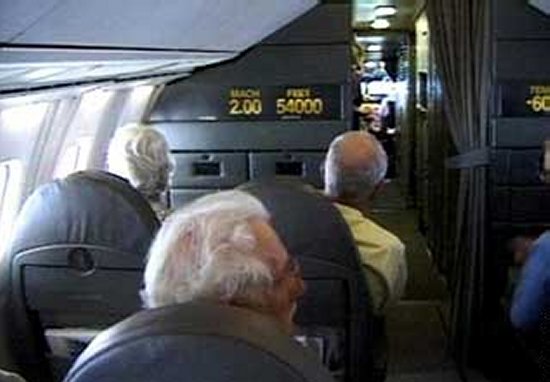|
||||||||||
|
|
||||||||||
|
||||||||||
|
|
||||||||||

When an object is moving through a supersonic flow, any disturbance like the sound created by speech can only move downstream from the direction of motion. A good way to visualize such a disturbance is to consider the example of a shock wave that forms as the supersonic air passes over the object. These shock waves always propagate downstream in the direction of the flow as shown in the following examples of supersonic flow passing over a wedge.

The opposite is true in a subsonic flow below the speed of sound. In this case, sound travels outward in all directions at the same rate. A good way to visualize this behavior is to recall the ripples created by dropping a rock into a pond. The ripples appear as circles formed evenly around the point were the rock impacts the surface of the water and spread outward in all directions at the same speed. When a person speaks, the sound waves behave in the same way. It is for this reason that we can hear a person talking whether he is in front of us or behind us.
Getting back to passengers aboard a plane, the sound waves they create as they speak behave no differently than if they were having a conversation while sitting at home around the dining room table. In both cases, the air around the people is at rest. Even though the air outside the plane may be moving by at incredible supersonic speeds, the air inside the cabin or cockpit is not moving with respect to the people inside. The internal air is therefore subsonic and sound waves travel in all directions like ripples on a pond rather than in only one direction like shock waves.
Now if the nose of the aircraft was to somehow vanish and the people inside were suddenly exposed to supersonic
air, any sounds they made would travel like shock waves instead of ripples. In this case, a person sitting at the
back of the plane would be able to hear sounds made by someone at the front, but that person at the front would not
be able to hear anything said by those behind him. This example is rather hypothetical, however, since sudden
exposure to a supersonic flow like that experienced outside an aircraft would produce intense and fatal forces on
the human body. Being able to hear what your friend at the other end of the plane was saying would be the least of
your concerns!
- answer by Joe Yoon, 6 May 2007
Read More Articles:


|
Aircraft | Design | Ask Us | Shop | Search |

|
|
| About Us | Contact Us | Copyright © 1997- | |||
|
|
|||